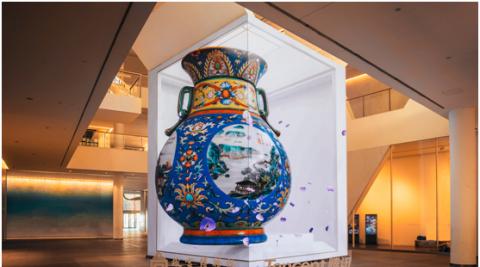On December 15, 2021, the second "Culture + Technology" International Forum, co-sponsored by the Palace Museum and Tencent, and supported by the Museum Digitalization Professional Committee of the China Association of Museums and the Informatization Professional Committee of the China Cultural Relics Society, opened in Shenzhen. More than 50 experts and scholars from home and abroad gathered to discuss the future of the museum in the digital age.
According to a report from the International Council of Museums, the COVID-19 crisis has accelerated the pace at which ancient museums have embraced cutting-edge technology, with more than 15% more museums adopting online displays of collections, exhibitions and live broadcasts in 2020, making them a leader in the digital wave.

At the forum, An Laishun, vice president of the International Association of Museums, shared the conclusions of three surveys conducted by the International Association of Museums during the COVID-19 epidemic, pointing out that "due to the impact of the new crown epidemic, the unprecedented connection between digital technology and museums, and the role played by the application of digital technology have also been fully confirmed." Many museums see improving digital services as an important, strategic option. ”
Three surveys, the first, began six months after COVID-19 (spring of 2020), followed by two more follow-up surveys conducted by the International Council of Museums in the fall of 2020 and the spring of 2021. "If we divide these two years into three stages, then the first stage is this survey in the spring of 2020, and the sudden outbreak has left museums as unprepared as other fields." But the museum took the initiative to intervene, using its own online resources to provide spiritual comfort for the public during the period of home isolation. The second stage is September 2020, when the digital application of museums has undergone a huge transformation, it has not only paid attention to the number and scale of digital technology applications in museums, but also paid attention to the means of digitalization itself - its future, its sustainability, and its maturity; the third stage, it has shown a new situation, that is, under the new normal, museums are exploring more mature communication channels for the application of digital technology. ”
These changes can also be demonstrated in different dimensions:
From the perspective of human resource allocation, the survey shows that museums with full-time digital employees have a proportion of 26.1% in the spring of 2020, and by the spring of 2021, the proportion has increased to 21.9%; museums with part-time digital employees, the proportion is 55.7% in 2020, and it will grow to 61.0% in 2021. The number of museums without professional digitizers is declining, from 18.3% in 2020 to 17.1% in 2021.
In terms of budget share, museums with digital applications accounting for more than 10% of the overall budget reached 13.4% in May 2021, which is a very, very difficult number. The proportion of museums accounting for 6%-10% is 11% in 2020, and it will grow to 16.5% in 2021. "What this conclusion reveals is that the number of museums planning to devote 6% or more of their overall budget to digitization and communication activities is growing rapidly."
Third, compared with before the COVID-19 outbreak, there has been a marked increase in museums' online activities, mainly in online collections, online exhibitions, online live streaming of events and the use of social media. In 2020, the proportion of museums adding online collections was 18.1% and 32% in 2021; museums adding online exhibitions in 2020 were 16.4% and 22% in 2021; museums using online live broadcasting were 19.1% in 2020 and 28.1% in 2021. Museums using social media were 47.5 percent in 2020 and 53.4 percent in 2021.
Fourth, from the perspective of museum digitalization, as a dimension of museum-related operation, development and strategy. The survey shows that the proportion of museums that use digitalization as a strategy has increased from 76.6% to 83.4% in a year; in the fall of 2020, only 38.7% of museums are considering adding dedicated digital staff, and this year this spring the proportion has increased to 41.9%; museums considering increasing their digital budgets are 43.2% in the fall of 2020 and 52.1% by the spring of 2021. The proportion of museums considering enriching their digital services was 74.8 percent in the fall of 2020, growing to 78.6 percent in the spring of 2021; the percentage of museums that strengthened digital staff training was 53.8 percent last year and 64.6 percent this spring.
The three surveys also prompted an important conclusion, "The survey found that 40% of museums have tried to adopt digital technologies as a channel for expanding revenue generation, although such benefits are not obvious at present." Anlaishun introduced that among the means of generating income, 14.1% of them sold online, 11.3% of them developed new cultural and creative products, 14.1% of them opened online stores, and 5.6% of them launched digital membership programs. 8.4% of those who implement paid online exhibitions and 7.4% organize paid online tours.
"Under the influence of the epidemic, the digital application of museums has become more normalized, more rational and more pragmatic." An Laishun said.
Text/Beijing Youth Daily reporter Zu Weiwei
Editor/Bow Lifang